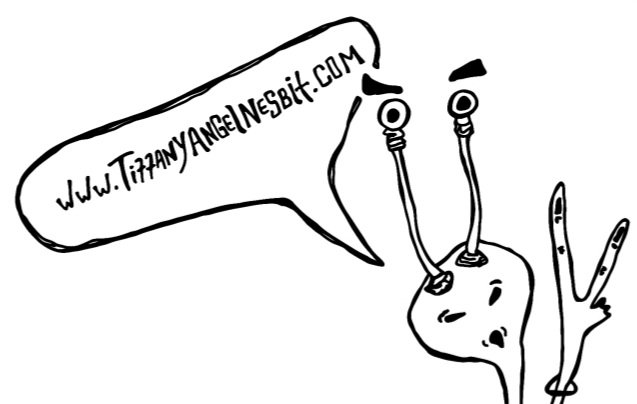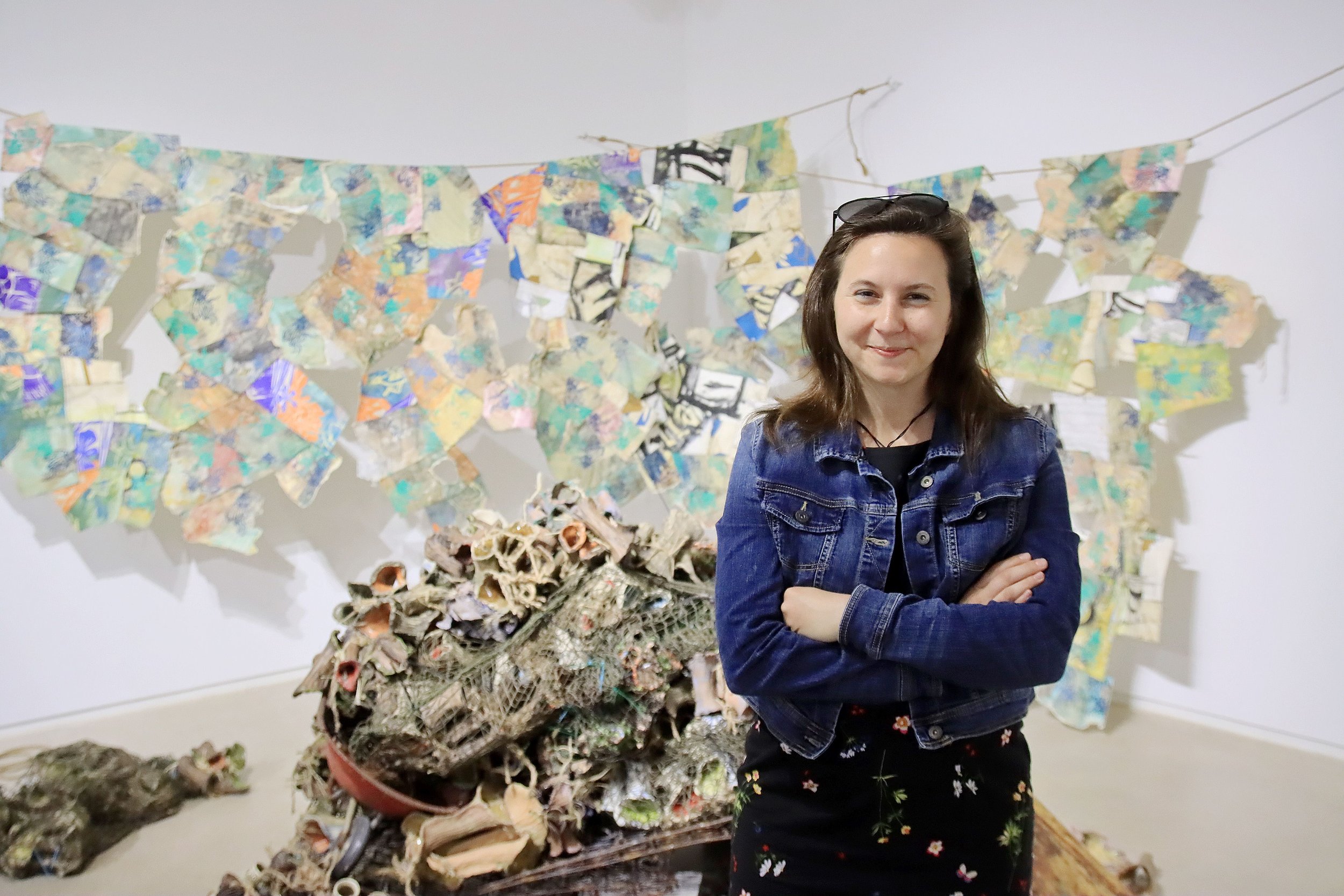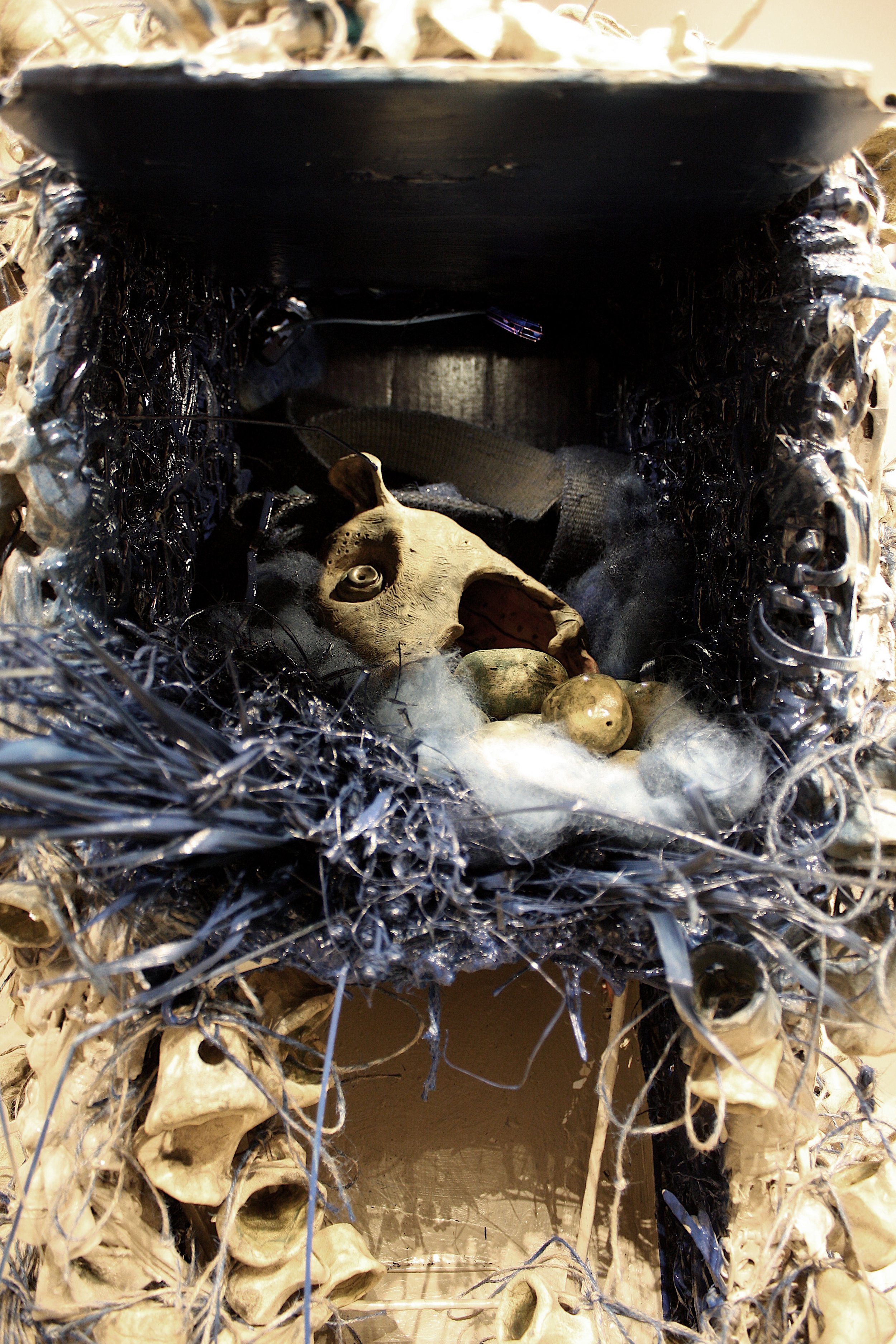Artist Bio
Tiffany Nesbit is native to New Orleans, Louisiana. She received her BA in visual arts from the University of Southeastern Louisiana in 2018. While earning her bachelors, she received a certificate of creativity and innovation from Disney University in Orlando Florida in 2015. She has earned an MFA in visual arts at the University of Houston in 2022.
Nesbit teaches sculpture as an Adjunct Professor at San Jack North Campus, along with teaching wheel throwing at Third Coast Clay, Houston Texas. She sells her work consistently at the First Saturday Art Market on 19th Street, and Second Saturday Folk Art Market at Sawyer Yards in Houston, Texas.
Artist Statement
My current practice is heavily influenced by childhood memories learning how to shepherd the family’s small farm; protecting the domestic animals on the property from monsters that come out from the woods and water systems at night. The characters in the work use humor and play to memorialize the animal’s spirits that once lived there.
The body of work “Piles and Bundles,” started by forming hundreds of small fragmented oceanic-like forms made with various clay bodies. After fired, the clay pieces are then bound and tied together with raw jute rope, fishing nets, bungy cords, mixed with found objects and old structures rediscovered on my family’s farm from 20+ years ago. Both the handmade forms and the found objects are stacked on top of each other to form what I call “Trash Islands.” The installation of these islands has been flexible. Each time the work is displayed in a galley, the piles and bundles are re arranged and organized differently to fit the specific space. Through this process, I have become interested in how similar the characteristics of the piles and bundles are to the actual trash in local water systems in Bayou Lacombe, Louisiana. In the water systems, the trash naturally floats and moves, collecting more trash and changing over time; creating large masses of real estate for small animals to escape from predators.
“Piles and Bundles,” is a bridge to “Nest.” Rather than creating a mass sculptural island, I started making smaller bundles of these organically shaped clay pieces and making smaller piles mobile on wheels. The Nests on wheels are becoming more specific to the creature created for the piece. For example, the work “A Opossums Last Dinner” caters to the story of a clutch of chicken eggs being eaten by an opossum. The chicken eggs and a head of the opossum are visible by the viewer, but there is no mother hen. The nest is constructed inside of 2 live traps. The eggs have been taken by the mother hen and placed into a trap to catch the predator and trespasser opossum.
In correspondence with making these 2 bodies of work, I have been collaging wood cuts and screen prints on paper, then sewing them together with old drawings and paintings from past bodies of work. The prints are influenced by insects and plants that are indigenous to southern states. Insects like water bugs, termites, beetles, along with tropical plants are carved into mdf board, inked, printed on top of my old paintings, and then sewn together to make one large hanging structure. This structure acts as a forest or rural landscape for the sculptural creatures, piles and bundles, and nest.



